
A few weeks ago, I discovered the Urban sketchers work. I decided to do my own sketch walk at Malacca for 2 days! That’s how I came back home with more than 20 pages of sketches.
I am a total beginner in watercolor. A few months ago, I talked to a popular group of artists, “the Rainbow Pig” in Ho Chi Minh weeks ago at a Manga festival. One of them, whose name is Kuno taught me some tricks. I kept them in my mind and decided to apply them during this trip. I can tell you that these few tricks are enough to start having a lot of fun with watercolors. I will show you all these tricks in this article.
My latest attempt with Watercolour was on Photoshop. But I couldn’t get a such sensitive painting with it. There are so many more parameters we can play in real! It’s just that there is no more Ctrl –Z (Undo on Photoshop when you do a mistake).
- The inclination of your paper to let the paint flow
- You can blow air with your mouth to make a special effect
- Control the amount of water the dilute the paint
- Mix colors with awesome transition
- …
A Lesson From an Artist: Use the Right Water
First of all, I needed water. I took my bottle of water and fill it with the one from the fountain. Besides that, I recommend using a bottle of water instead of a cup (personal preference). It’s easier to transport, as you don’t have to wash it and dry it to carry it to the next place.
However, I met an artist at a gallery in Malacca. He warned me that water from fountains or bottled water could contain bacteria that slowly “eat” the paper, causing it to darken. He recommended mineral water or clean tap water as better options.
He also emphasized that every art supply component—paper, brush, paint quality, and water—plays a crucial role. Change even one, and the result changes. There’s no magic formula. Instead, mastery comes from steady practice and experience.

Feel free to use the cap to mix some colors inside.
DAY 1: Near the Red church
I began near the iconic Red Church with a calligraphy pen I bought from Tokyu Hands and a basic brush that reminded me of school days. The thick brush forced me to simplify my sketches since fine details were nearly impossible.
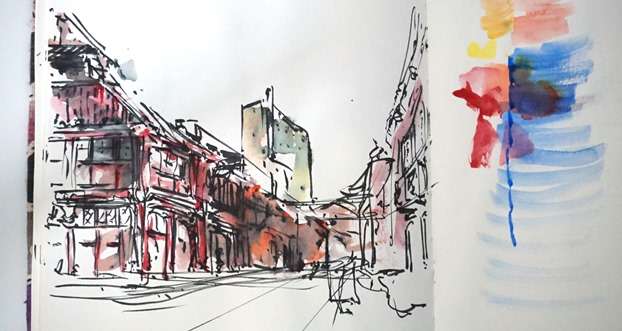
When I started to paint, I realized that the black ink started to be diluted with the red paint. It was not made on purpose. However, the effect actually looks good, no?
At some point, I noticed my black ink subtly diluted with red watercolor—not planned, but the accidental effect looked surprisingly good! Sometimes, creativity blossoms from such unexpected moments.
I also discovered the value of testing colors on the side of the page for quick previews before applying them to the sketch.

Next, I sketched details of the church’s fountain. To avoid ink dilution, I switched to my water-resistant Pilot Twin marker and tried a harder flat brush. The secret here was to keep my lines loose and relaxed—urban sketching is about capturing the vibe, not perfection.
I began by roughly marking vertical and horizontal axes then focused on larger shapes, keeping symmetry in mind. Layering light and dark greens while working wet-in-wet helped me capture the monument’s lighting and depth.
The calligraphy pen because has quite a thick brush. You can’t draw small details with it. It means I had no other choice than simplify.
I like to use the side page to test colors. It gives me an instant preview.
The video in real time: 17 minutes.
Drawing the Fountain’s details
The 2nd attempt came to drawing some detailing from the fountain of the Red Church of Malacca.
To avoid the dilution of the black ink, I choose one of my favorite pens: the Pilot Twin marker which is water-resistant. For the brush, I tried something harder, a flat brush.

The secret of drawing urban sketches is to draw loose. You need to relax and ignore the presence of tourists who may look above your shoulder or even take you in the picture. If you start to draw for them, you may get some pressure, and start feeling tense.

For the outlines
- I start by roughly drawing the vertical and horizontal axis. (I haven’t well followed them…)
- I do not start by “micro-details”, I draw the main shape first keeping the symmetry in mind.
- Then I refine.
Here is a monochromatic painting.
- I first visualize the source of light (from top left),
- I apply light green paint on the opposite side of the lighting.
- I darken the green adding some black paint with a huge amount of water
- I spread it while the light green color is still wet.
The video in real time: 7 minutes
Next sketch:
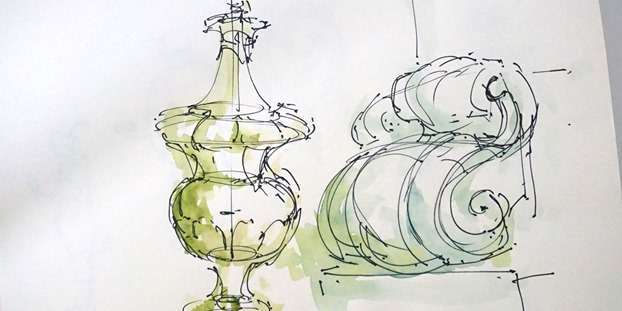
I feel the green color is suitable for the monument. I try to explore more. So main tip to remember here is to add a maximum of water on the drawing. If your paper is suitable for watercolor, it may not undulate much and not let the water going through. When you are done, be patient. Let the sun dry the paint.
Next sketch:
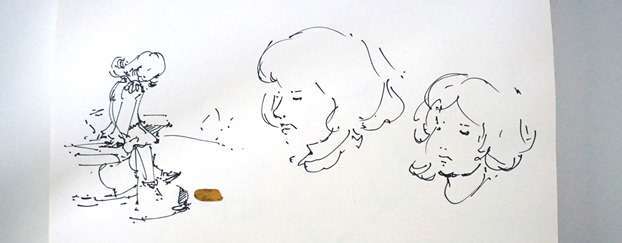
A little girl was playing at the fountain. She had nice features. A tourist came and congratulate me on the drawing. Then she called the little girl asking her to come and see the sketch I did of her. The little girl said no and went elsewhere to sit. I was not done yet… I felt a bit disappointed… Next time I will kindly ask the tourist to do not to interact if they try to. : /
Side the river
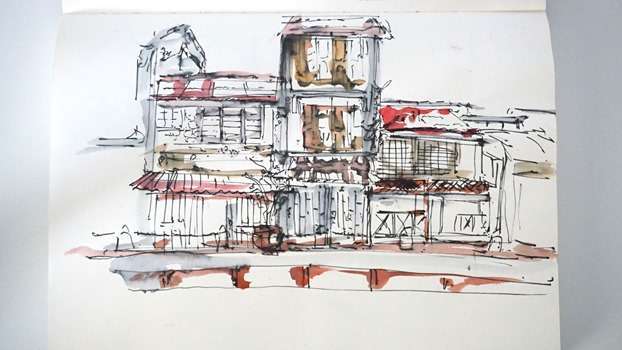
This sketch is really dirty. I guess I haven’t well manage the composition of colors. What is difficult at the start, is that we are tempted to fill everything. However, playing with a good amount of white will be emotionally more impactful.
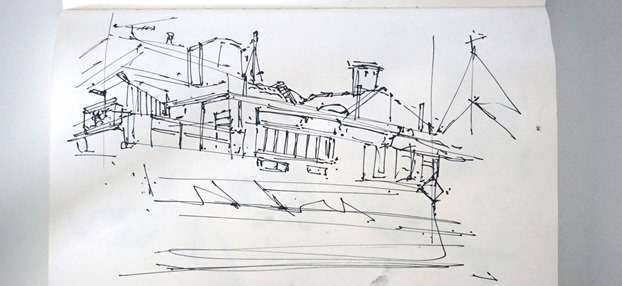
Just a quick sketch, then the rain came, so I left the place.
At a World heritage restaurant
I discovered a World heritage restaurant at Jonker street. The interior architecture was like coming from an old martial art movie with Donnie Yen (IP Man).

When you play with 2 colors, try to choose one dominant. Here is the red against the touch of green. If you play 50-50, your eye may feel confused. This trick applies to anything in life. Look around you, the products you use every day seldom carry this ratio, except toys.
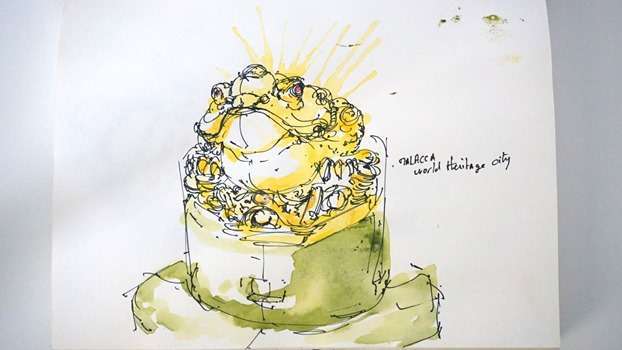
Have you noticed the splash of colors behind the frog? It’s something fun to do.
- Drop a lot of colors with a good amount of water.
- Then put your mouth in front of it and huff very strong in multiple directions!
At the Ba Ku Teah restaurant

I quite liked the association of green and yellow I did with the frog during lunchtime. Now it’s about 9pm, and I decided to play with that combo again. By experimenting with multiple combinations of colors, I may come out with a set of favorite ones.

I ordered Chinese tea. It’s quite impressive to see how just a touch of red color can bring it alive.
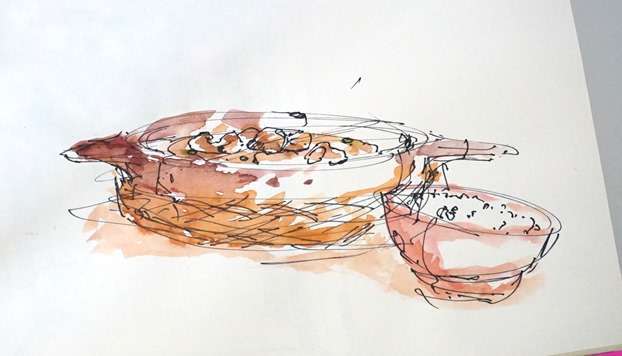
It was quite late. I felt tired and ordered a local dish: Ba Ku Teh. My line is very bad. However, the overall still look good! I believe that any beginner in sketching could try and enjoy urban sketching. It will be a good way to get confidence. However, once again don’t stay too long in a comfort zone.
Day 2: Exploring the Riverside and Temple
Malacca is a small city, so I wandered to the riverbank where colorful scenes caught my eye. My sketches got looser as I challenged myself to suppress unnecessary details, especially in backgrounds like trees—just outlining their shapes was enough.
A highlight was sketching a Chinese temple on a very windy day. Pages kept turning, making me realize I need a clip to keep them secure next time!
Including people in sketches brought scenes to life. I learned that while accuracy isn’t critical, exaggerating postures to capture attitude helps convey movement and expression—especially since people move fast.
Side the river

My drawing gets looser and looser. Whatever it looks quite good. I am challenging myself at suppressing details and still having a decent result. The tips I would spot here is about the background, where I only draw the outline of the trees. (left side of the drawing)
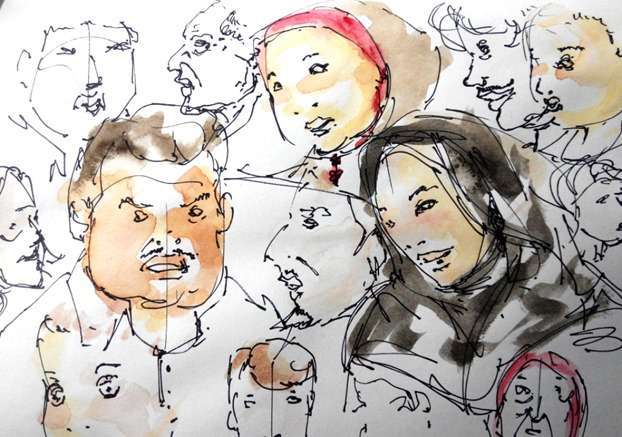
The people of the restaurant from where I sketched. The tips to remember here is to apply a touch of red on people’s cheek. It gives more reality to them.
Chinese temple

When I was drawing the Chinese temple, it was really windy. The pages kept turning. Next time, I will plan a clipper for my sketchbook.
The full video here: 15 minutes
Time lapse video: http://youtu.be/5UbC0Cx_90A 44 seconds

I extra sketch of the temple.
It’s good to remember to include people in the scene.
Back to Jonker Street
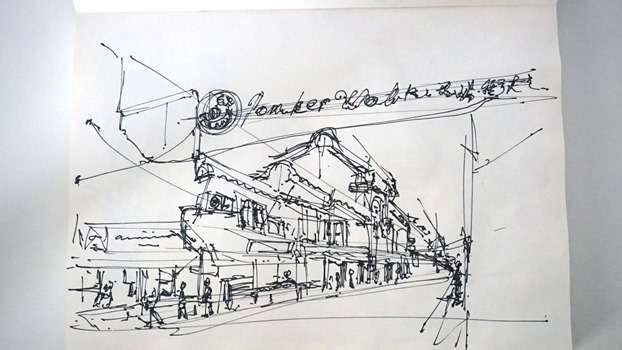
Jonker street is one of the most crowded places in Malacca. I started to draw people.
I guess I should have included a crowd in the scene.
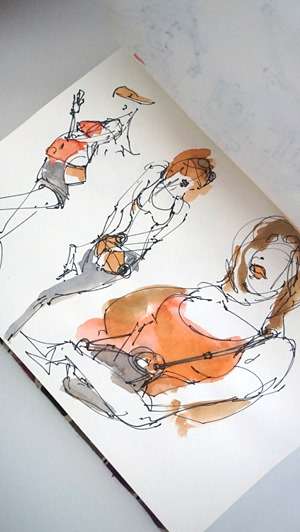
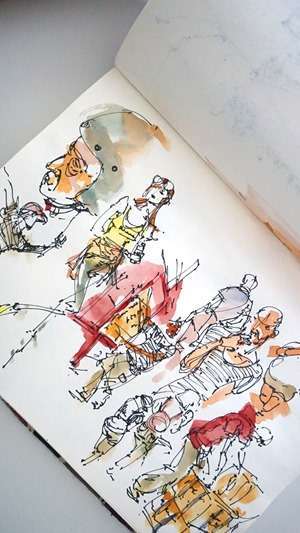
You don’t have to be very accurate, however, try to keep a reasonable sense of proportion and don’t hesitate to exaggerate people’s posture. They will be more expressive. People are moving fast. Don’t try to remember everything, instead, try to catch an attitude.
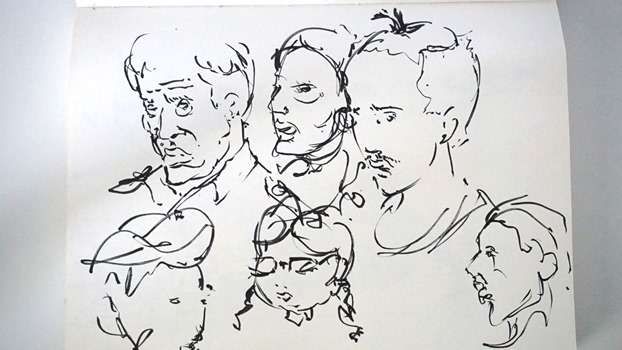
Some pedestrians that I draw with different lightweight. The calligraphy pen with a brush as a nib is quite good for that effect.
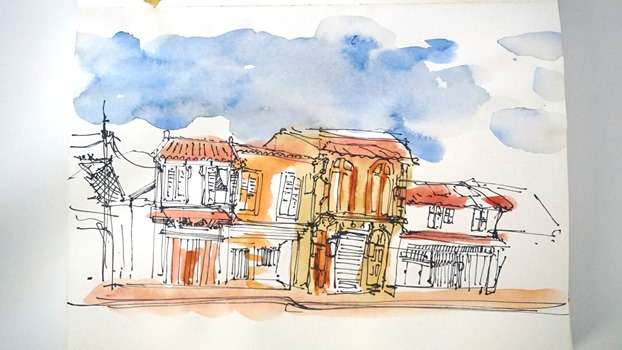
I challenge myself sketching with slanted walls. I actually like it. It’s wonderful to see how urban sketch can give such freedom.
What I learned from a confirmed artist.

I visited a Chinese calligraphy shop. Then I saw a flyer about an art gallery. I thought he was giving some courses, so I went there. It was actually exclusively a gallery. selling the artist’s work that includes a lot of watercolors. I met the artist, and told him about my “Urban sketching adventure”. He said that I shouldn’t use the fountain water for my watercolor.
It’s full of bacteria that will “eat” the paper. With time, the drawing will tend to brown. He’s very picky into to choice of the water. He usually takes mineral water and only tap water if there is no alternative choice.
He told me that each element of your art supplies has a role: paper, brush, water, quality of the watercolor… influence the end result. You change one of them, and you will get a different result. There is no magic recipe to learn watercolor.
In the end, practice and experience is the key.
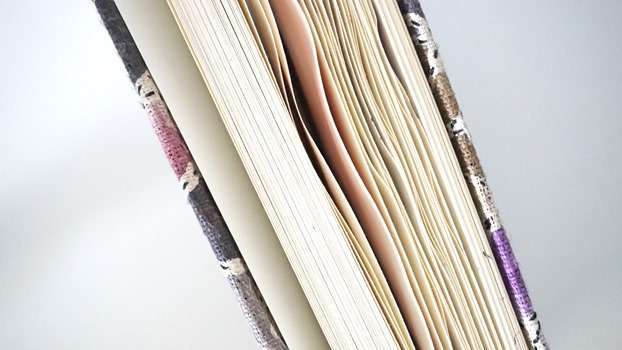
How my sketchbook pages look like at the end of this trip.
Being overseas, I have been quite late about the posting of articles, so I hope this one will be very helpful!
If you have any comments or questions, feel free to ask.
We can learn together.
Final Reflections
Watercolor is a dance between control and happy accidents.
Sometimes my sketches looked “dirty” or unfinished, but these imperfections are part of learning. Experimenting with color combos and letting water flow naturally taught me patience and flexibility.
I’m no expert yet, but I believe any beginner willing to explore with curiosity will find joy—and progress—in urban sketching. This trip was not just about the sketches, but about learning to see and feel the world differently.
If you’re curious about watercolor or urban sketching, I encourage you to try—and don’t worry about mistakes. They often lead to your best discoveries. If you want to share your experiences or questions, please leave a comment. Let’s learn together!


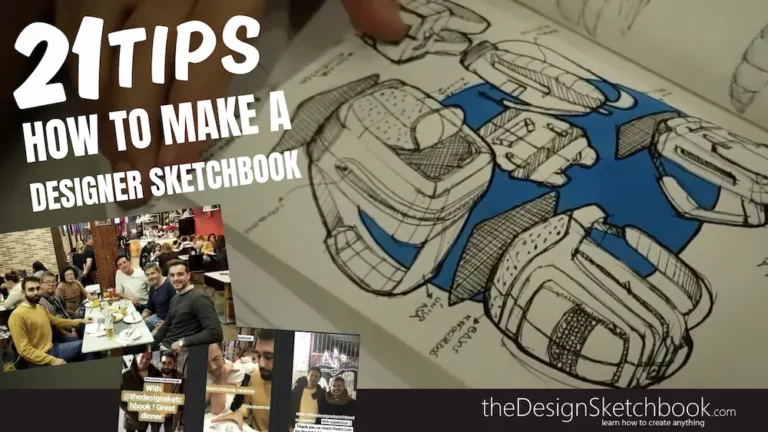

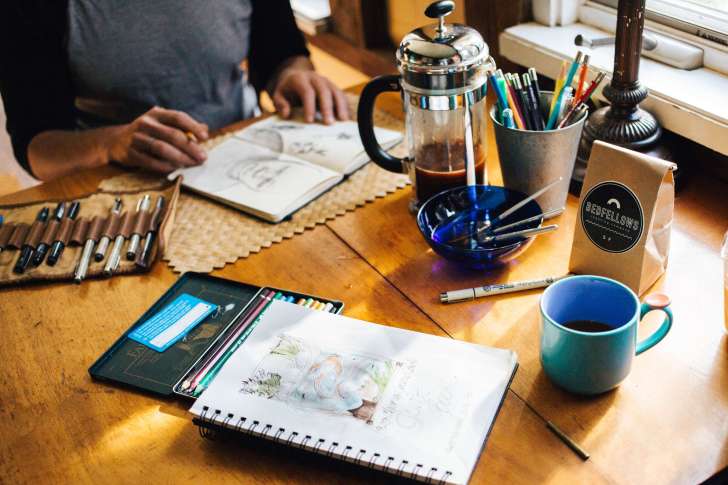
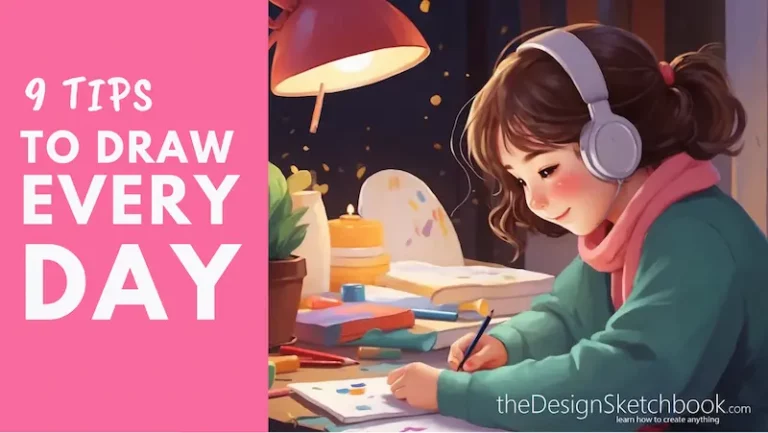
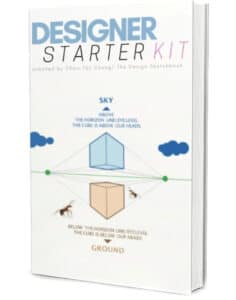

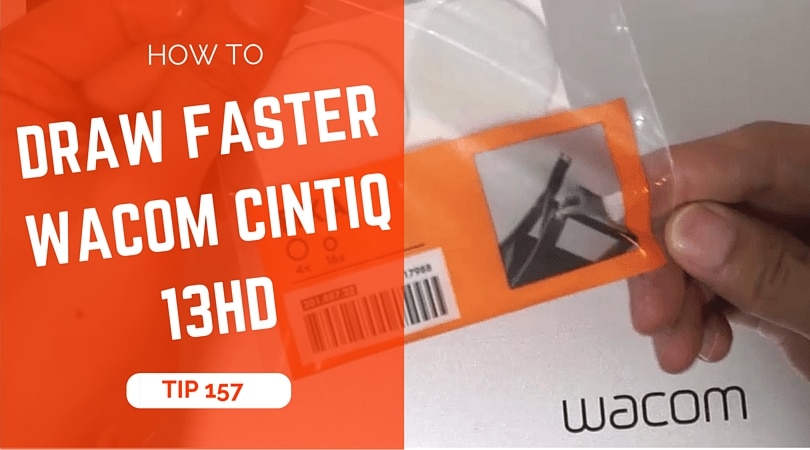

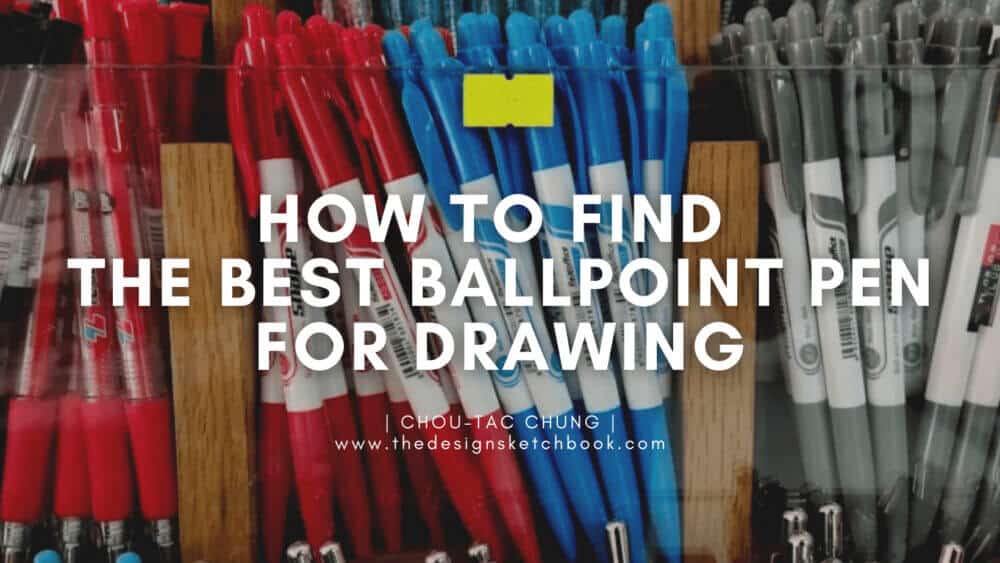
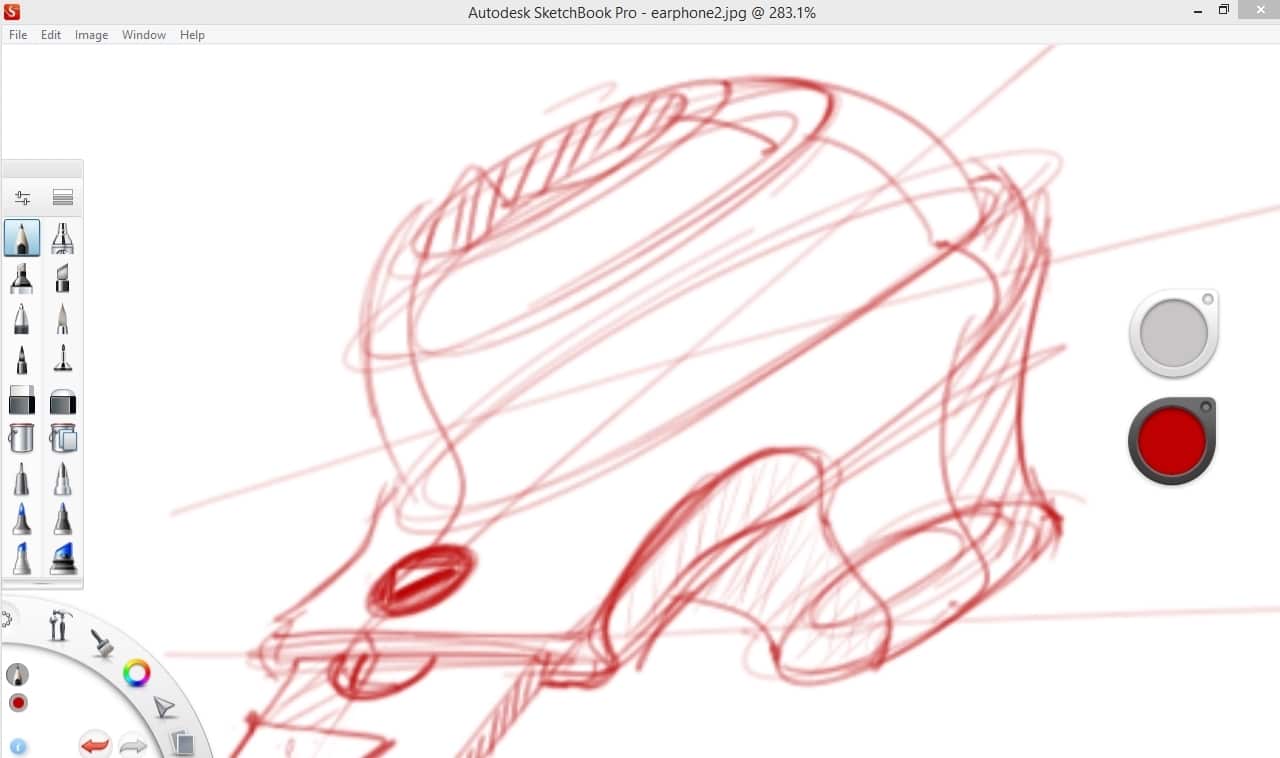

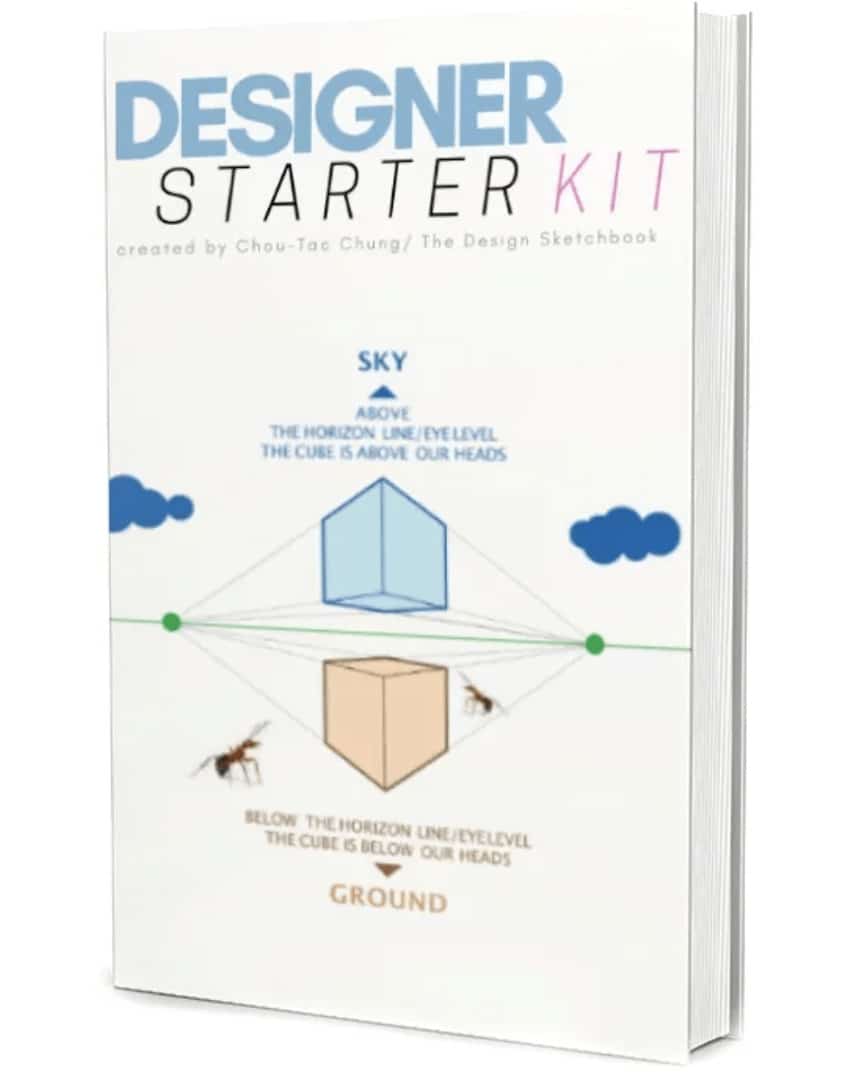


Add comment